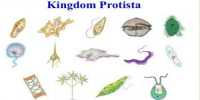There are several ways of grouping animals. In all these methods the basic Taxon remains without any change. However the taxa are rearranged in different groups. All these groupings are mostly provided for the convenience in identifying similar taxa.
(1) One of the earliest method of grouping the animals could be dividing the Animal kingdom into two assemblages called Invertebrata and Vertebrata.
This scheme was provided initially by Aristotle. This scheme does not have a place for the Prochordates.
(2) Animals can also be grouped as single celled and multicellular. The single celled organisms are called the Protozoans. The multicellular could be called the Metazoans. In this arrangement among the metazoans the unique nature of the sponges in not having a tissue grade of body constuction is not mentioned.
(3) In yet another method the animals are grouped under following three assemblages.
- Protozoa – single celled animals
- Parazoa – Multicellular without tissue grade (sponges).
- Eumetazoa – Multicellular with tissue grade.
(4) In a recent system, the entire living world is subdivided into 5 kingdoms. This system is much more broader including algae, fungi, and plants. It is known as the Five kingdom concept.
(i) Kingdom: Monera – It includes all bacteria and the cyanobacteria. A circular DNA occurs in the cytoplasm. The cell wall is a rigid structure. a) Phylum: Cyanobacteria b) Phylum : Bacteria.
(ii) Kingdom: Protoctista or Protista – It includes single celled eukaryotes. It has two subkingdoms, namely Protozoa and Algae.
(iii) Kingdom: Fungi
(iv) Kingdom: Plantae (green plants)
(v) Kingdom: Animalia : multicellular, eukaryotic animals.












